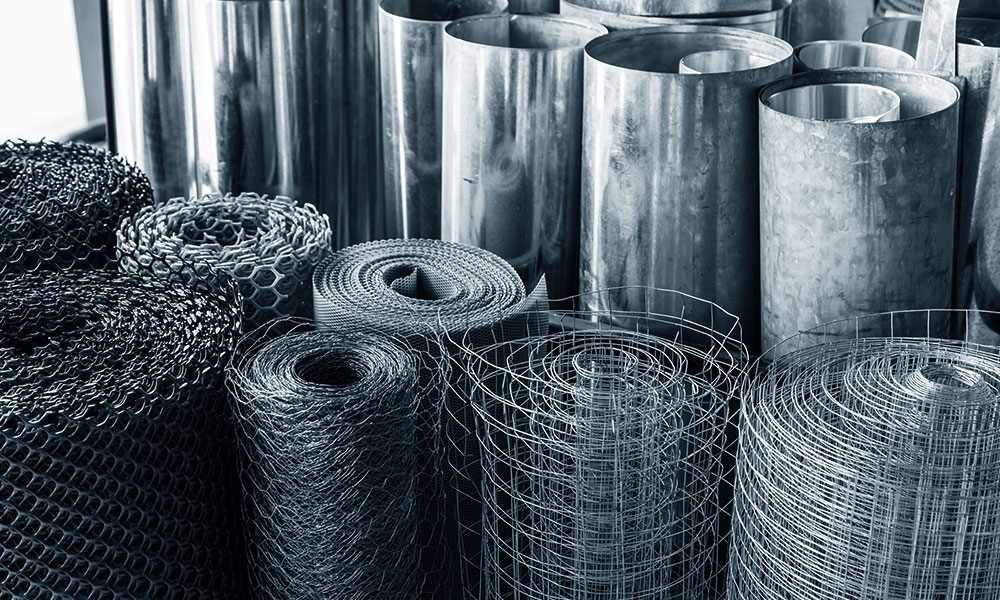
Introduction to AMS 5629 and the SS 13-8 Stainless Steel Bar
The aerospace and manufacturing industries are perpetually evolving, constantly seeking materials that offer superior strength, durability, and corrosion resistance. The introduction of AMS 5629, known commercially as SS 13-8 stainless steel bar, marks a significant advancement in this realm. This material represents a synthesis of innovation and practicality, addressing the burgeoning demands for high-performance materials in critical applications.
Key Properties of SS 13-8
Strength
One of the most remarkable properties of SS 13-8 stainless steel is its exceptional strength. This strength is primarily attributed to its unique chemical composition and the resultant microstructure achieved through precipitation hardening. The alloy exhibits high tensile strength, which is critical for applications requiring materials that can withstand significant stress and strain without deforming or failing. In aerospace and structural engineering, where materials are subjected to extreme loads and stresses, the high strength of SS 13-8 offers an indispensable advantage.
Toughness
Toughness is another critical attribute of SS 13-8. This property reflects the material’s ability to absorb energy and deform plastically before fracturing, making it highly resistant to impact and shock loads. The toughness of SS 13-8 is particularly beneficial in applications where materials must endure sudden and severe forces, such as in landing gear components, fasteners, and critical structural parts in aerospace and military applications. The alloy’s resilience to cracking and fracturing under stress ensures reliability and safety in these high-stakes environments.
Corrosion Resistance
Corrosion resistance is a hallmark of SS 13-8 and is integral to its performance in aggressive environments. This property is largely due to its high chromium content, which forms a passive oxide layer on the material’s surface, shielding it from various corrosive agents. Additionally, elements like molybdenum enhance its resistance to pitting and crevice corrosion, particularly in chloride-containing environments such as marine and chemical processing settings. This corrosion resistance extends the life of components made from SS 13-8, reducing maintenance and replacement costs, and is crucial in applications where exposure to corrosive elements is inevitable.
How SS 13-8 Bars are produced
The manufacturing process of SS 13-8 bars is a meticulous and sophisticated procedure, designed to optimize the material’s properties:
- Melting and Casting: The process begins with the melting of raw materials, including iron, chromium, nickel, molybdenum, and other alloying elements, in a controlled environment. This molten metal is then cast into ingots or billets, ensuring uniformity in chemical composition.
- Hot Rolling: The cast ingots or billets are heated to a high temperature and hot rolled. This process involves passing the heated metal through rollers, reducing its thickness and shaping it into long bars. Hot rolling is crucial for aligning the grain structure of the metal, which plays a vital role in enhancing its mechanical properties.
- Solution Annealing: After hot rolling, the bars undergo a solution annealing process. This involves heating the bars to a specific temperature and then rapidly cooling them. Solution annealing is critical for dissolving precipitates and homogenizing the microstructure, ensuring the steel is in a soft, ductile state for further processing.
- Precipitation Hardening: The defining step in the production of SS 13-8 bars is precipitation hardening (also known as age-hardening). This heat treatment process involves heating the bars to a lower temperature than the solution annealing process and maintaining it for a specified duration. This treatment precipitates fine particles within the steel matrix, significantly increasing its strength and hardness without compromising its toughness.
- Finishing Processes: Finally, the bars are subjected to various finishing processes, including straightening, cutting to length, and surface finishing. These processes are tailored to achieve the desired dimensions, tolerances, and surface quality, making the bars ready for use in various industrial applications.
Comparing SS 13-8 with Traditional Stainless Steels
The advancement in stainless steel technology, epitomized by SS 13-8, can be appreciated more fully when compared to traditional stainless steels. This comparison highlights the innovation and specialized properties that SS 13-8 brings to the table.
Mechanical Properties
- Strength and Hardness: While traditional stainless steels are known for their ductility and corrosion resistance, SS 13-8 stands out for its superior strength and hardness. This is a result of its precipitation-hardening process, which traditional austenitic stainless steels do not undergo.
- Toughness: SS 13-8 also excels in toughness, especially at lower temperatures, compared to many traditional stainless steels. This makes it more suitable for applications that require resistance to impact and shock.
Corrosion Resistance
- General Corrosion: Traditional stainless steels like 304 and 316 offer good general corrosion resistance due to their high chromium content. They perform well in a variety of environments, particularly where oxidation is a concern.
- Enhanced Corrosion Resistance: SS 13-8, with its higher chromium and molybdenum content, provides enhanced corrosion resistance, especially in harsh environments, including those with chlorides. This makes it more suitable for marine, aerospace, and chemical processing applications.
Application Specificity
- Broad Applications: Traditional stainless steels are used widely across various industries due to their good balance of properties and cost-effectiveness. They are a common choice for kitchen appliances, architectural structures, and general hardware.
- Specialized Applications: SS 13-8, due to its superior strength, hardness, and corrosion resistance, is geared towards more demanding applications. It is extensively used in aerospace, nuclear, petrochemical industries, and in the manufacturing of medical devices and instruments.
Cost and Manufacturability
- Cost-Effectiveness: Traditional stainless steels are generally more cost-effective and easier to manufacture. They can be easily formed, welded, and machined, which makes them suitable for a wide range of commercial and industrial applications.
- Higher Cost and Specialized Manufacturing: SS 13-8, given its specialized properties and manufacturing process (like precipitation hardening), is more expensive. Its manufacturing and processing require more advanced technology and stricter quality control, contributing to its higher cost.
Innovative Applications of SS 13-8
SS 13-8 stainless steel, with its exceptional strength, toughness, and corrosion resistance, finds innovative applications across a range of industries. These industries benefit from its advanced properties, ensuring reliability and longevity in environments where traditional materials might fail.
Aerospace Industry
- Aircraft Components: SS 13-8 is extensively used in the aerospace industry for manufacturing critical aircraft components such as landing gear, shafts, and fasteners. Its high strength-to-weight ratio and resistance to stress-corrosion cracking make it ideal for these applications.
- Engine Parts: The alloy’s ability to maintain strength at high temperatures is crucial for engine parts, including turbine blades and other components exposed to extreme heat and pressure.
Medical and Surgical Instruments
- Surgical Tools: The biocompatibility and corrosion resistance of SS 13-8 make it suitable for surgical instruments. These properties ensure that the tools remain free from corrosion when exposed to bodily fluids and sterilization processes.
- Implantable Devices: Its strength and biocompatibility also make SS 13-8 a preferred choice for implantable medical devices, such as orthopedic rods and pins, which require materials that can endure the stresses of the human body without degradation.
Petrochemical Industry
- Piping and Valves: In the petrochemical industry, SS 13-8 is used for manufacturing components like valves, fittings, and pipes that are exposed to corrosive substances and high pressures. Its corrosion resistance is particularly valuable in environments where exposure to harsh chemicals is a constant challenge.
Nuclear Industry
- Reactor Components: The nuclear industry utilizes SS 13-8 for fabricating components within nuclear reactors. The material’s resistance to radiation damage, coupled with its strength and corrosion resistance, makes it suitable for this high-risk environment.
Automotive and Motorsport
- High-Performance Components: In the automotive and motorsport sectors, SS 13-8 is used for manufacturing high-strength components like gears, shafts, and fasteners. These applications benefit from the material’s ability to withstand high stress and temperature variations.
Marine Applications
- Shipbuilding: SS 13-8’s excellent corrosion resistance, especially to saltwater, makes it suitable for marine applications, including shipbuilding and submarine parts. It is used in components that require robustness against corrosive marine environments.
Aerospace and Defense
- Military Hardware: In the defense industry, SS 13-8 is used in the production of various military hardware components. Its combination of strength, toughness, and corrosion resistance is crucial for equipment that must perform reliably in diverse and challenging environments.
Heat Treatment and Machinability of SS 13-8 Bars
Heat Treatment
Heat treatment is a critical process in enhancing the mechanical properties of SS 13-8 bars. The process involves two main stages:
- Solution Treatment: This initial phase involves heating the SS 13-8 bars to a high temperature (typically around 950°C) and then rapidly cooling them, usually by water quenching. This treatment homogenizes the alloy, dissolves precipitates, and improves ductility.
- Precipitation Hardening (Aging): Following solution treatment, the bars undergo precipitation hardening. They are heated to a lower temperature (ranging from 480°C to 620°C) for a specific duration. This process causes the formation of fine precipitates within the steel matrix, significantly increasing its strength and hardness. The exact temperature and time depend on the desired balance of strength, toughness, and corrosion resistance.
Machinability
Machining SS 13-8, especially after heat treatment, can be challenging due to its high strength and hardness. However, with proper techniques and tools, it is machinable:
- Cutting Tools: Using hard, wear-resistant tools like carbide or cobalt-based alloys is essential for effective machining.
- Coolants: Liberal use of coolants is recommended to manage the heat generated during machining and to enhance the tool life.
- Speeds and Feeds: Adjusting cutting speeds and feed rates is necessary to accommodate the hardness of the material. Lower speeds and higher feeds are typically used compared to machining softer stainless steels.
Cost Analysis: The Economic Aspects of Using SS 13-8
Material Cost
- Higher Initial Cost: SS 13-8 typically has a higher initial cost compared to traditional stainless steels. This is due to the more complex alloying elements, the specialized manufacturing process, and the additional steps involved in heat treatment.
Manufacturing and Processing Costs
- Machining and Fabrication: The cost of machining and fabricating SS 13-8 is higher due to the need for specialized tools and techniques. The hardness of the material can lead to increased wear on cutting tools, thus increasing tooling costs.
- Heat Treatment: The specific heat treatment requirements of SS 13-8 also contribute to the overall cost, requiring precise temperature control and timing.
Long-Term Savings
- Durability and Longevity: Despite the higher upfront costs, SS 13-8 can offer cost savings in the long term. Its superior strength, toughness, and corrosion resistance can reduce the need for frequent replacements and maintenance.
- Performance Efficiency: The enhanced performance characteristics of SS 13-8 may lead to increased efficiency and reliability in applications, potentially reducing downtime and associated costs in critical industries.
Application-Specific Value
- Cost Justification in High-Performance Applications: In industries where material failure can have severe consequences, such as aerospace or medical applications, the higher cost of SS 13-8 is often justified by its superior performance and reliability.
In summary, while the initial and processing costs of SS 13-8 bars are higher compared to traditional stainless steels, these costs are often offset by the material’s superior properties and the long-term savings it offers in terms of durability and maintenance. The decision to use SS 13-8 is typically driven by the specific requirements of the application and the value placed on its enhanced performance characteristics.




